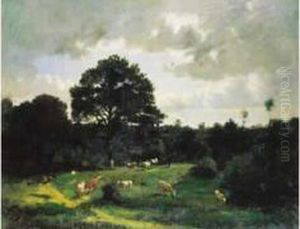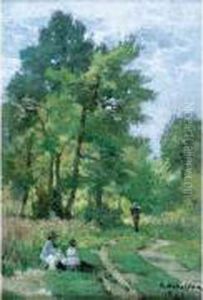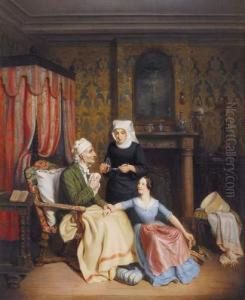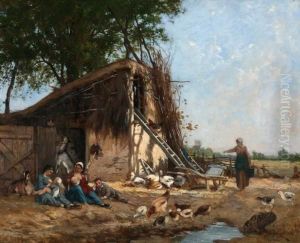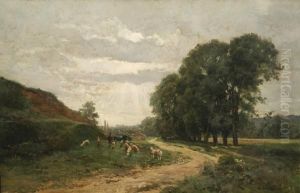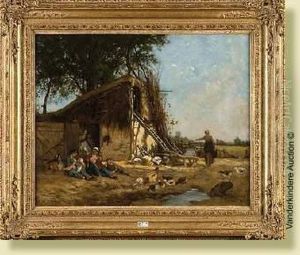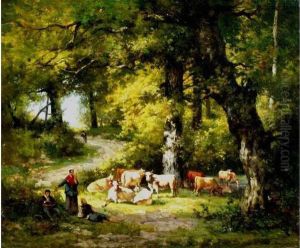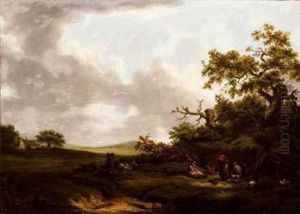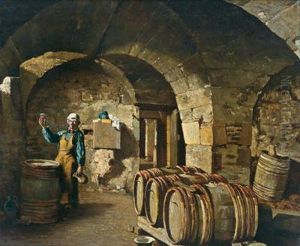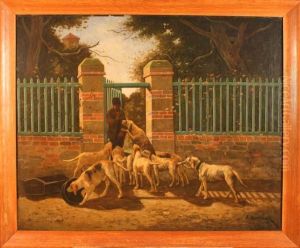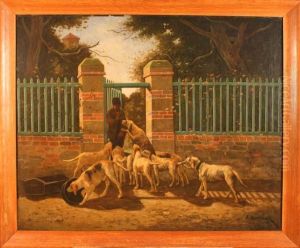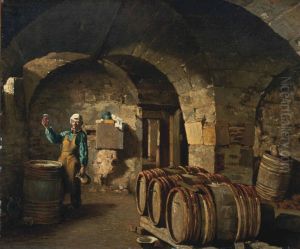Hector Ch. Hanoteau Paintings
Hector Ch. Hanoteau, born in 1823 and passing in 1890, was a French landscape painter whose work significantly contributed to the 19th-century French art scene. Unlike the more famous Impressionists of his time, Hanoteau focused on depicting the rural French countryside with a more realistic and detailed approach, capturing the serene and unspoiled aspects of nature.
Hanoteau's early life was marked by a deep appreciation for the natural world, which would become a central theme throughout his artistic career. He studied under renowned artists who were part of the Barbizon school, a movement that emphasized the beauty of the French landscape and rural life. This influence is evident in Hanoteau's meticulous attention to the details of flora and the changing qualities of light within his compositions.
Despite his talents, Hector Ch. Hanoteau remained relatively obscure during his lifetime, often overshadowed by his contemporaries who were experimenting with bolder styles and techniques. However, his unwavering dedication to his craft earned him a respectable place among landscape painters of his era. His works were exhibited in several Salons, where they received positive critiques for their realism and the artist's ability to evoke the atmosphere of the French countryside.
After his death in 1890, Hanoteau's legacy lived on through his contributions to French landscape painting. His commitment to capturing the essence of rural France has been revisited and appreciated in more recent times, as art historians and collectors seek to uncover and celebrate the nuances of 19th-century French art. Today, Hector Ch. Hanoteau is remembered not just for his beautiful landscapes but also for his role in preserving the natural beauty of France through his art.
